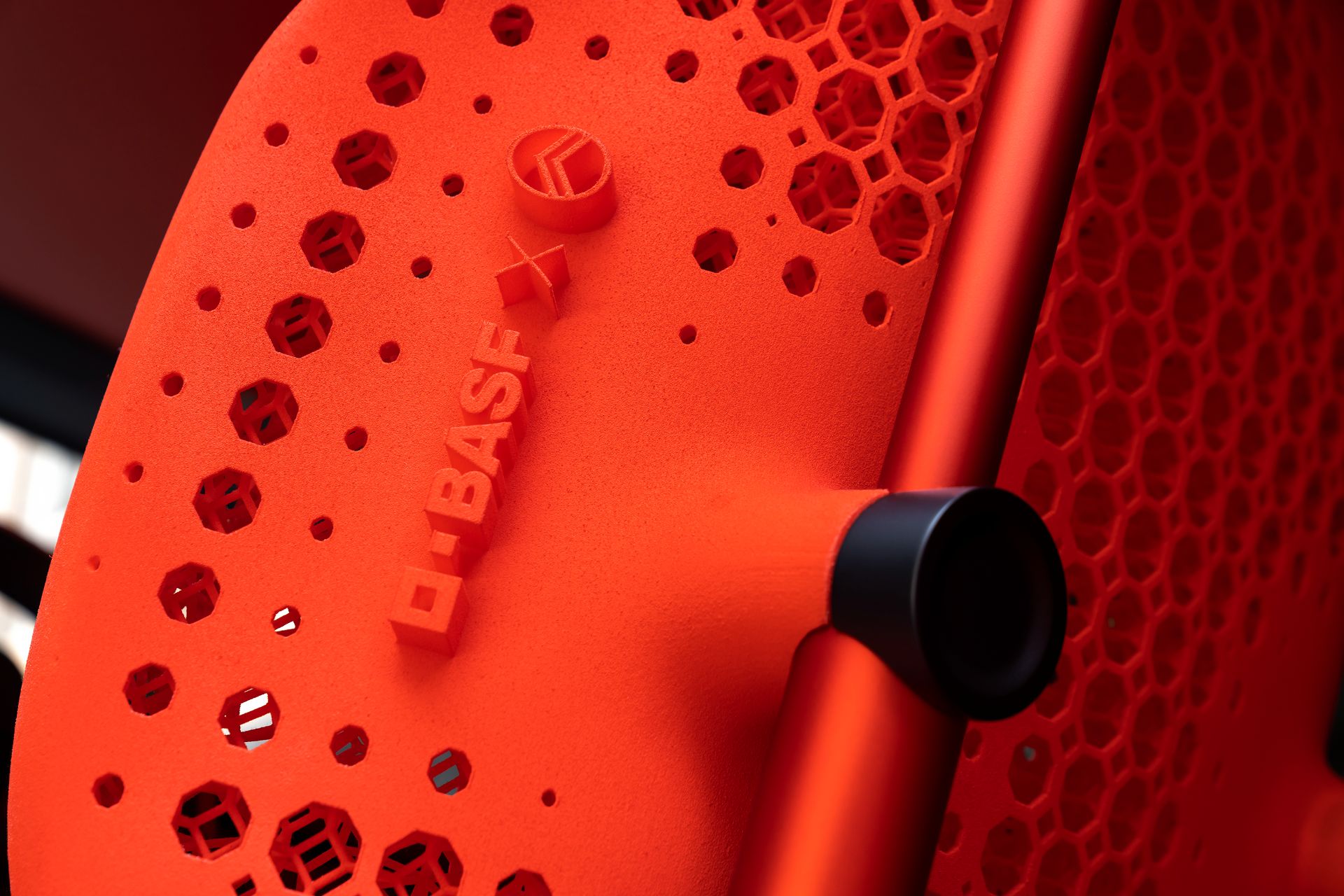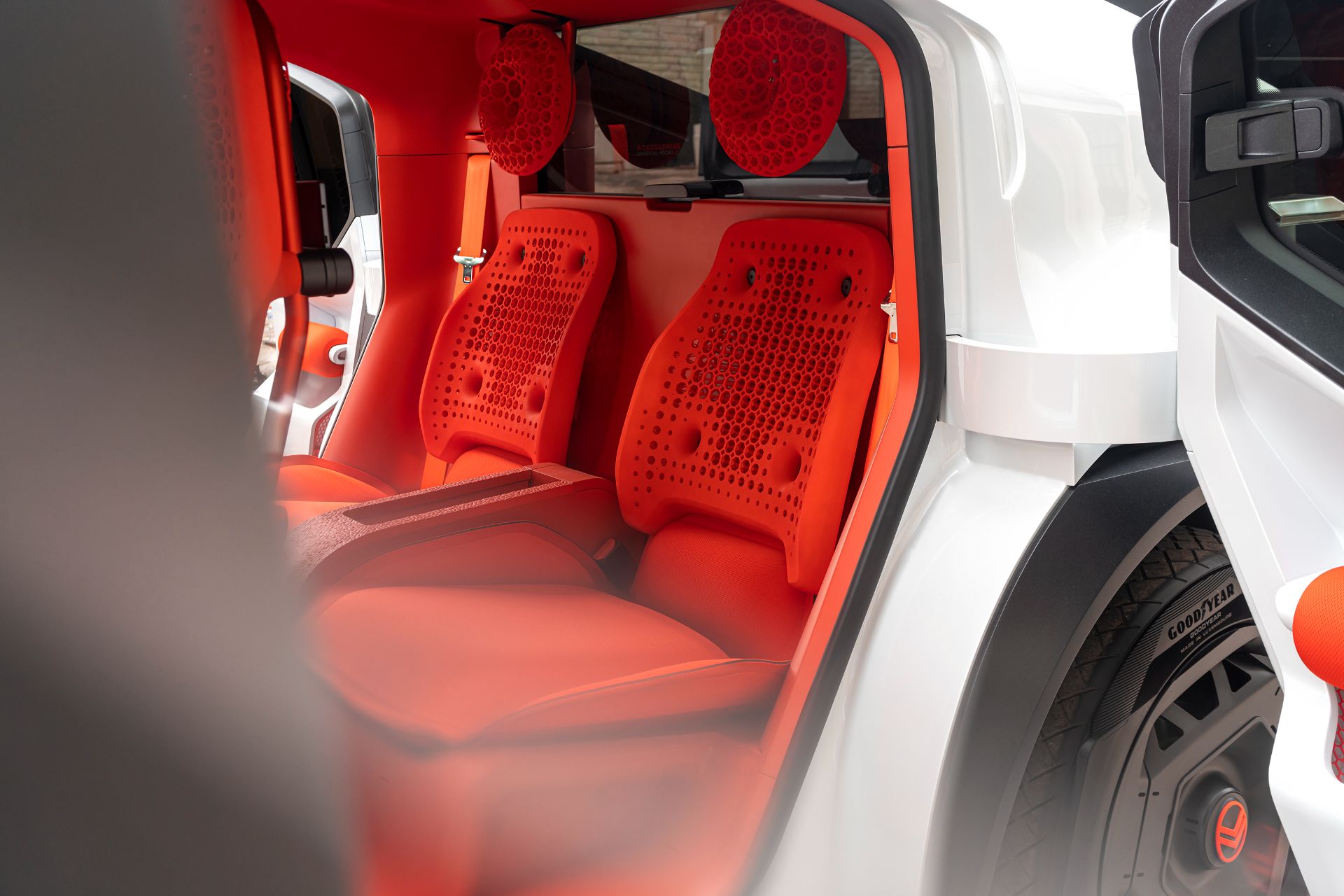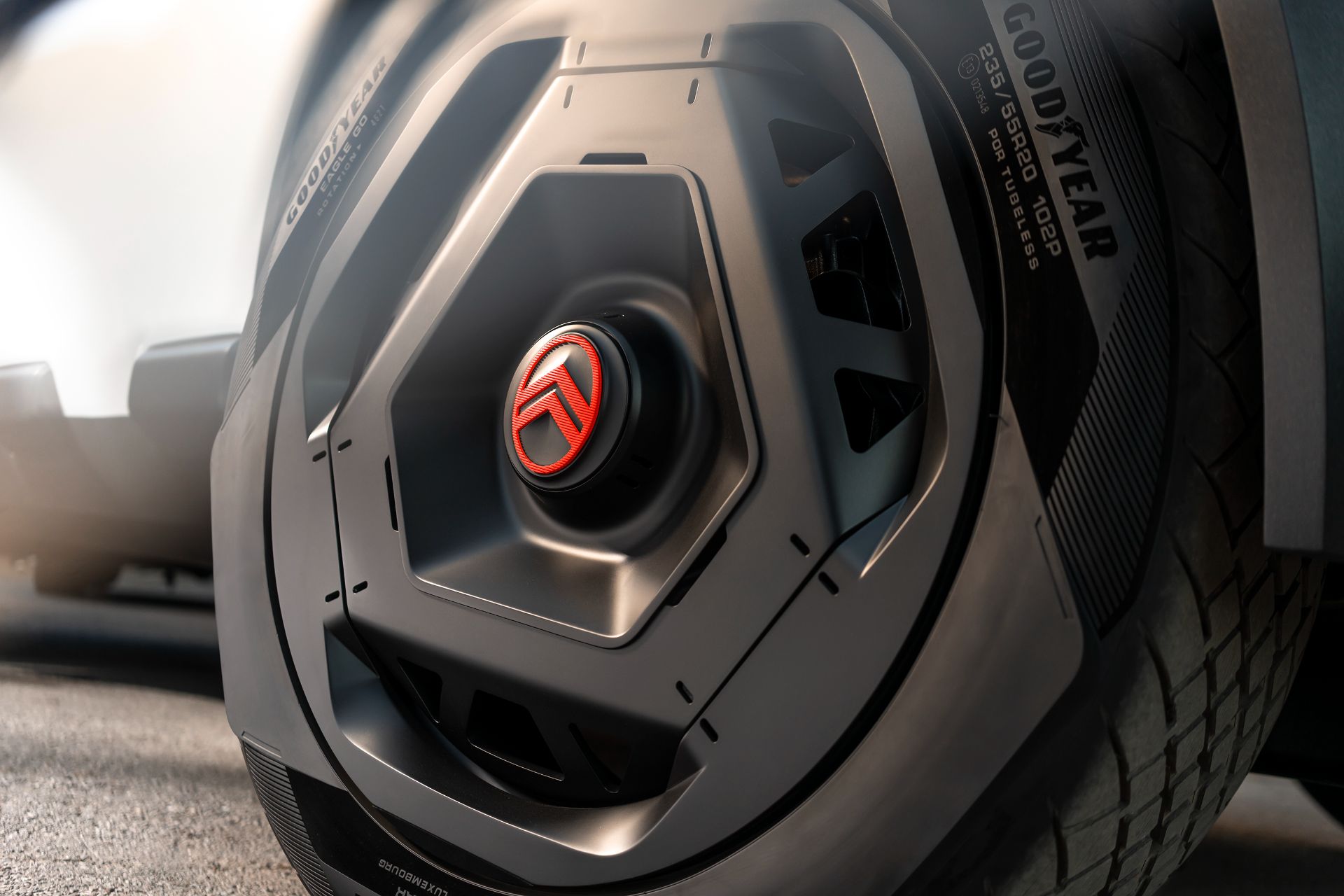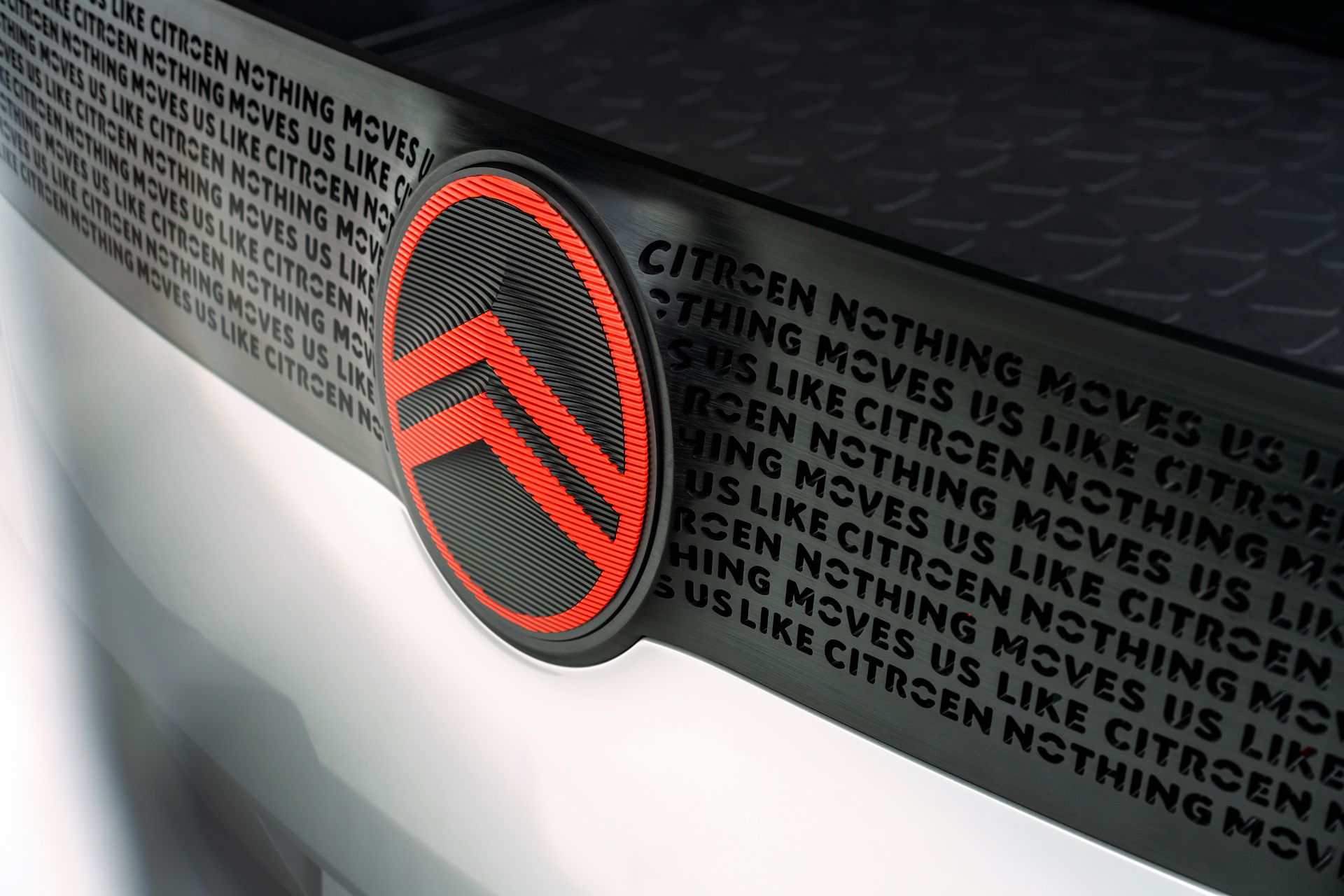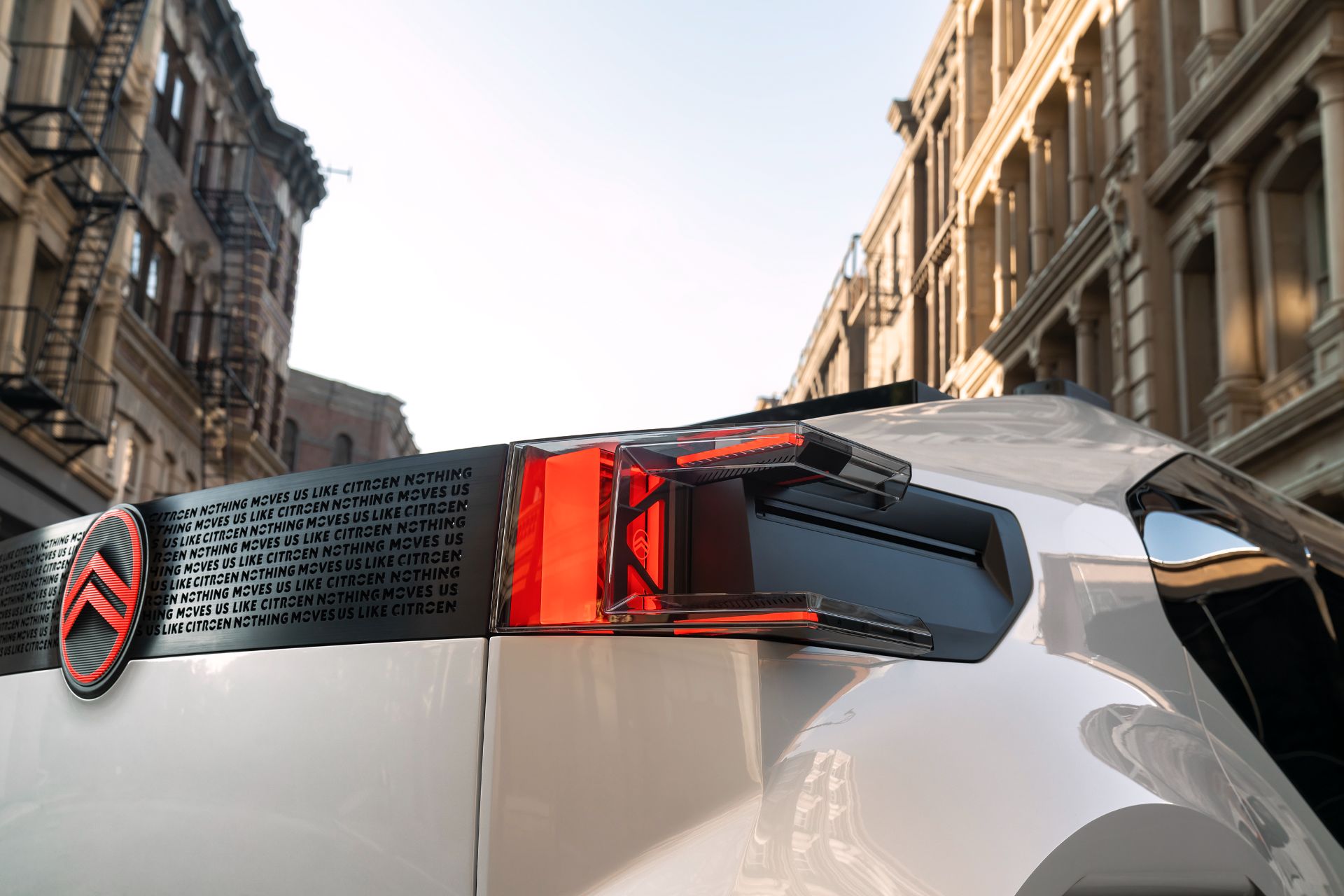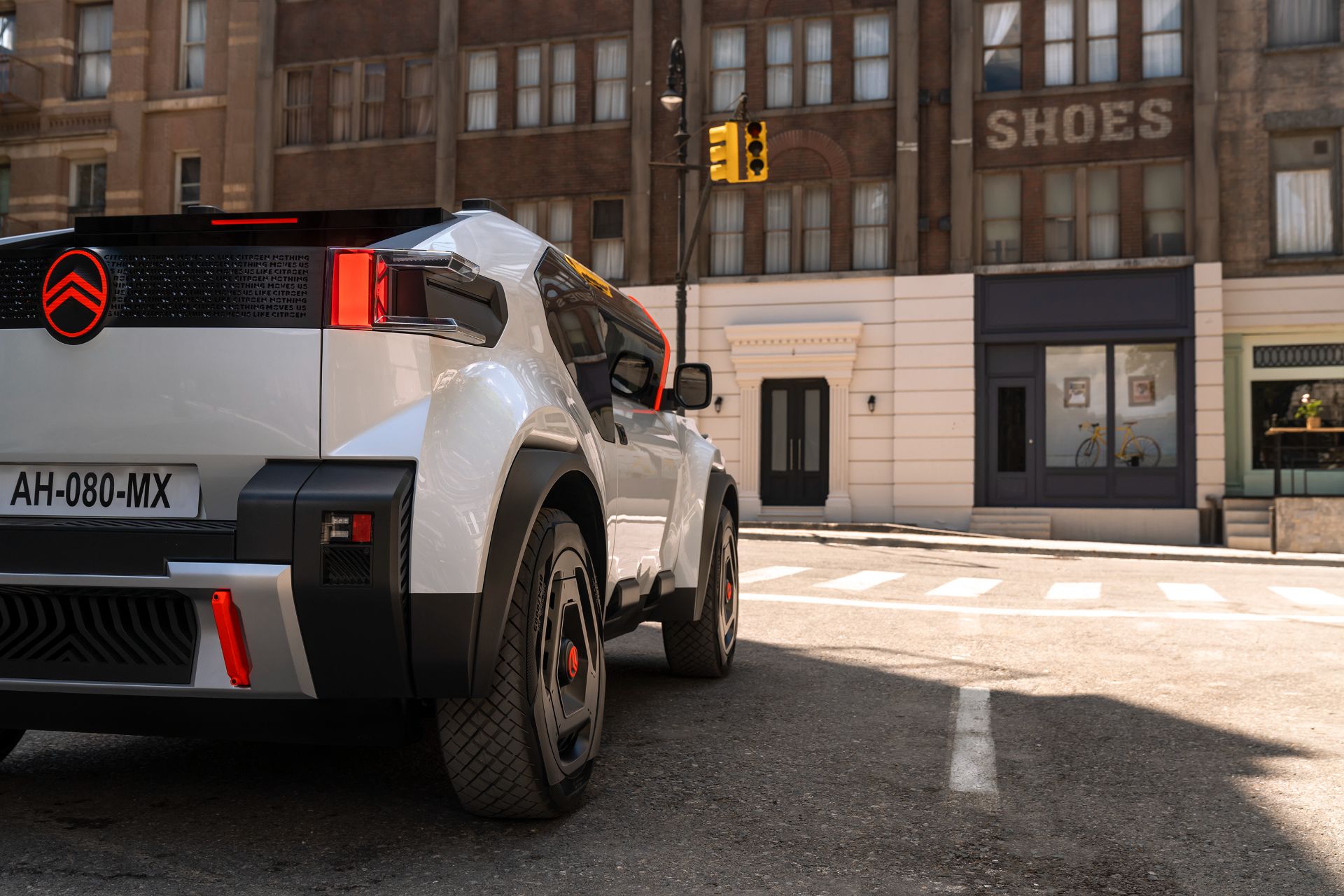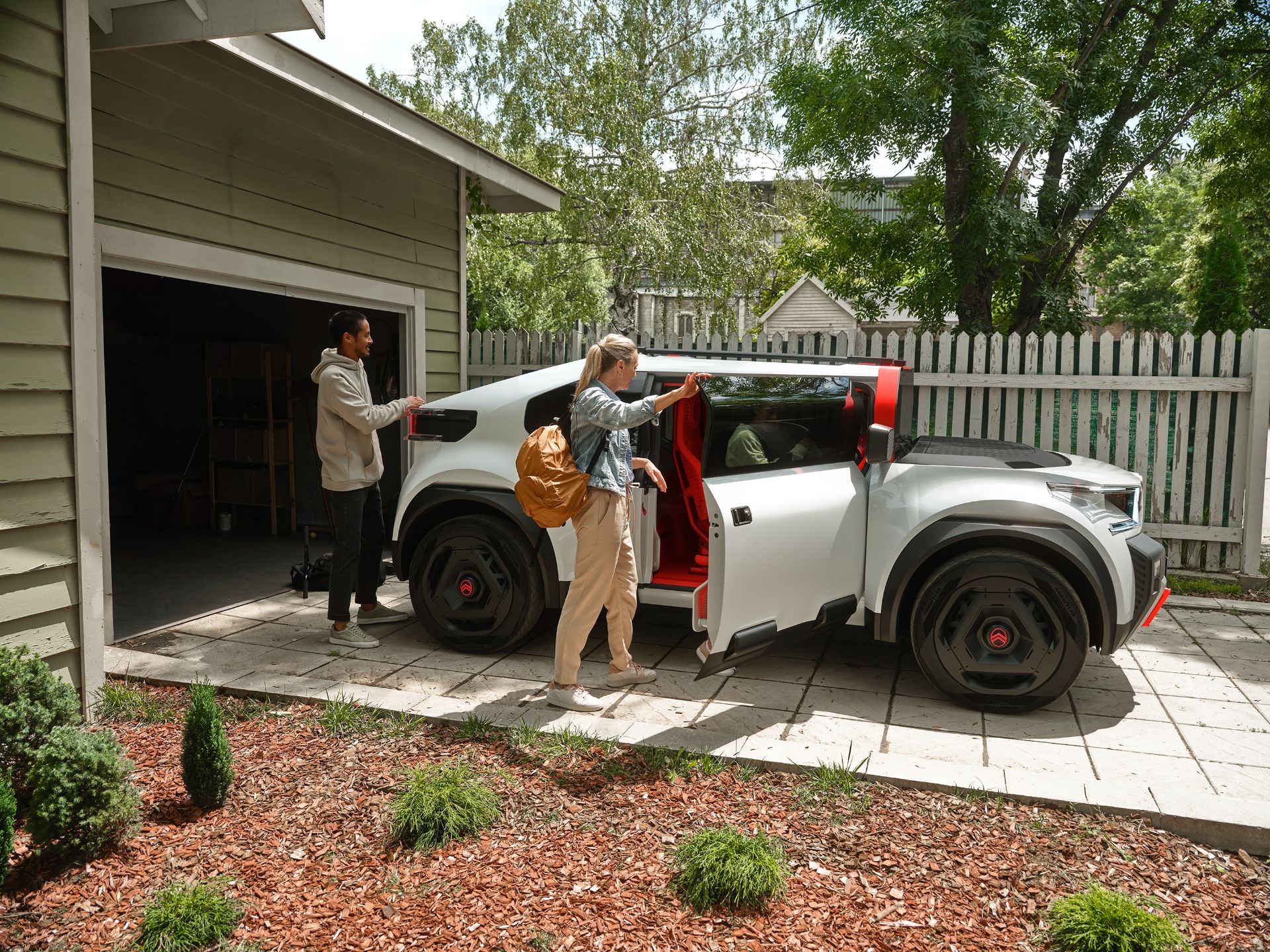Citroen unveiled the Oli, a lightweight EV pickup concept with quirky styling focused on being affordable, and sustainable. The pickup truck concept is made of recycled and recyclable materials and is the first to integrate Citroen’s new logo and brand identity before it is applied to production models starting next year.
Citroen describes the Oli (pronounced “all-e”) as a “laboratory on wheels”. The design of the 4,200 mm (165 inches) long vehicle is quite playful, in a similar way to the Ami heavy quadricycle. The unconventional bodystyle includes a vertical front windshield, suicide doors for easy access to the colorful cabin, and a relatively small bed. While the concept appears to be more aerodynamic when reversing, Citroen added an “aero duct” system on the bonnet in order to reduce drag.
Also Read: Citroen Thinks Electrification Is A Threat To Affordable Vehicles
The Oli’s face is a departure from Citroen’s current model range, adopting a grille-less look as well as the new oval-shaped emblem. The latter is painted in Infra-Red, matching the windshield frame, the wheel caps, bumper accents, and the entire cabin. The boxy C-shaped LED headlights have integrated inlets, with the LED taillights following the same pattern.
The front and rear bumpers integrate identically-shaped plastic elements and skidplates, with extra lighting units. The toned-up fenders combine round shapes with flat tops, while a pair of airbump-style protective elements on the symmetrical doors are also present. In typical Citroen flavor, the side windows do not appear to open, with the rear door glass dropping lower than the horizontal beltline. The futuristic wheels are made of steel and aluminum, shod in Goodyear Eagle GO concept tires designed for longevity.
The highlight at the back is the rear bed, which is made of recycled cardboard (like the bonnet and the roof), and remains hidden under the upwards-opening rear windscreen. The compartment is removable and can expand from 679 mm (26.7 inches) to 1,050 mm (41.3 inches) in length, thanks to the folding tailgate. With a width of 994 mm (39.1 inches) and a maximum height of 582 mm (22.9 inches) when the panel is not in place, the bed can hold larger items than a conventional boot.
Bold Colors, Simple Tech Inside The Cabin
Opening the doors you are greeted by a cozy lounge with four individual seats bathed in Infra-Red. The seats, made of Thermoplastic Polyurethane (TPU) with 3D-printed mesh on the backrests, are mounted on tubular frames attached to the floor through shock-absorbing isolation rings. They use far fewer parts than in a conventional car, which is also the case for the dashboard.
The latter is designed around a horizontal beam, integrating removable Bluetooth loudspeakers. Instead of multiple large touchscreens, Citroen designers added a smartphone dock, five toggle switches for the air conditioning, USB sockets, and a practical shelf made of Elastollan. There is however a single screen for projecting information called Smartband, located on the base of the windscreen. Interestingly, all functions are controlled via a joystick mounted on the steering wheel.
As with all Citroen models, the Oli is integrating the “Advanced Comfort” philosophy, while offering plenty of practicality. The modular floor is made of a single-piece expanded thermoplastic polyurethane foam (E-TPU), that can be replaced and color-coded. The same material can be found on running shoes and bicycle saddles. Citroen added a waterproof coating that can be hosed clean thanks to draining plugs. The door panels are also simplified with large storage bins and a simple design.
Electric But Lightweight
Despite being fully electric, the target weight of the Oli is 1,000 kg (2,204 pounds). Thanks to the low consumption of 10kWh/100km, the French electric truck concept has an estimated EV range of 400 km (249 miles), with the 40kWh battery being able to charge from 20-80 percent in 23 minutes. The concept also supports “Vehicle to Grid” (V2G) and “Vehicle to Load” (V2L) capability, meaning it can store energy and sell it back to the grid, or power electric devices through the integrated socket. Citroen didn’t announce the power figures or the number of electric motors, but we do know that top speed is limited to 110 km/h (68 mph), prioritizing efficiency instead of performance.
In a quest to boost the vehicle’s longevity, Citroen designed the Oli to be refurbished instead of replaced. Cars that are no longer drivable would become part donors, keeping other Olis on the road.
The Citroen Oli might be a design study, but the French company says we should expect to see its “ideas, design details and interior advances represented in future production models”. As noted by Pierre Leclercq, Citroen’s design chief: “There’s no sense in proposing cool materials or designs that will never influence future production vehicles”.










